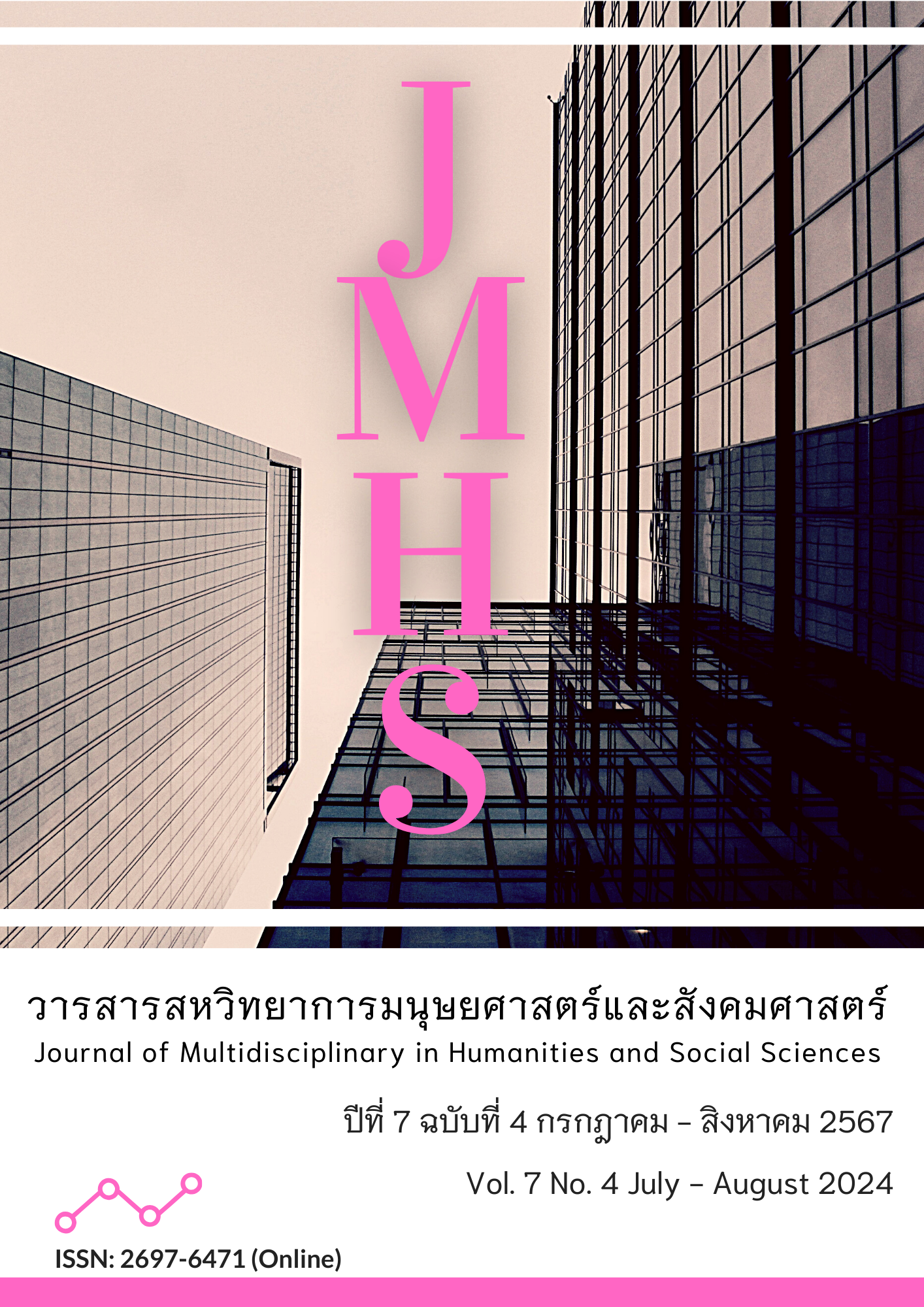Practical English Curriculum Development to Improve the Writing Ability of Deaf and Hard-of-Hearing College Students Based on Autonomous Learning Theory: A Case Study of Chongqing Normal University
Main Article Content
Abstract
The article aimed to develop a practical English writing curriculum based on autonomous learning theory and evaluate its effectiveness in improving the writing ability of deaf and hard-of-hearing college students (DHH). The target group comprised 18 deaf freshmen. The curriculum development process includes four stages: (i) research on basic information about curriculum development; (ii) development of a practical English writing curriculum; (iii) implementation of the curriculum; and (iv) evaluation of the curriculum with a focus on improvement. After three months of implementation, the researchers made a statistical analysis of the students' writing scores in the pre-test, mid-test, and post-test and analyzed the demographic variables. The validity of the evaluation results of the Practical English Curriculum and the analysis of research data showed as follows: 1. An enhancement was made to students' writing skills throughout the curriculum, and 2. practical English writing curricula are effective in improving the English writing ability of DHH college students.
Further analysis of the data indicates that the schools attended by DHH college students, their communication methods, and their learning psychology all have an impact on their curriculum learning results. Consequently, curriculum designers, implementers, and managers should all pay attention to the above issues. Useful suggestions are given according to the results and conclusions of this research.
Article Details

This work is licensed under a Creative Commons Attribution-NonCommercial-NoDerivatives 4.0 International License.
Views and opinions appearing in the Journal it is the responsibility of the author of the article, and does not constitute the view and responsibility of the editorial team.
References
Bowers, L., Mccarthy, J. H., Schwarz, I., Dostal, H., & Wolbers, K. (2014). Examination of the spelling skills of middle school students who are deaf and hard of hearing. The Volta Review, 114(1), 29-54.
Cao, Y. (2020). Applying metacognitive strategies to construct efficient English classrooms. University Teaching Reference, (3), 70-71.
Ding, Z. (2019). A case analysis of the negative transfer of English written expression of deaf college students from sign language. Overseas Digest (Academic), (22), 3-4.
Gu, Y. (2023). On the current situation and suggestions of English learning for deaf college students. The Road to Talent, (34), 141-144.
Gu, Y. Q. (2023). Research on the current situation and intervention of English writing ability and writing strategies of deaf and hard of hearing college students[Master's thesis, Chongqing Normal University].
Haider, G. (2016). An investigation of the writing processses of students with hearing loss: Implications for teaching of writing. International Online Journal of Primary Education, 5(1), 1-10.
He, Y. Q. (2017). Practical research on scaffolded English writing teaching method in deaf high schools. Modern Special Education, (23), 45-47.
Lei, Z. (2020). Empirical research on the application of metacognitive strategies in college English writing teaching. Overseas English, (23), 51-52.
Marks, C., & Stuckless, R. (1966). Assessment of the written language of deaf students. http://eric.ed.gov/?id=ED010042
Ministry of Education of the People's Republic of China. (2007). Experimental plan for compulsory education curriculum in deaf schools. http://www.moe.gov.cn/srcsite/A06/s3331/200702/t20070202_128271.html
Pan, M. W. (2020). Writing ability self-evaluation scale “China English ability level scale” ---- “research on writing ability scale”. Higher Education Press.
Paul, P. (1998). Literacy and deafness. Allyn and Bacon.
Paul, P. (2009). Language and deafness. (4th ed.). Singular.
State Council of the People’s Republic of China. (2011). The “Twelfth Five-Year Plan” development program for the cause of disabled persons in China. https://www.cdpf.org.cn/zwgk/ghjh/cjrsyfzgh/sew/aea76129c12a4d949231e08977982af4.htm
Wang, Y., Liu, A., Huang, L., & Liu, H. (2018). Research on language transfer of deaf students’ written English expression based on error analysis. Journal of Nanchang Institute of Education, 33(3), 124-128.
Wang, Z. (2020). Research on the English proficiency scale of Chinese deaf students. Journal of Henan Institute of Science and Technology, 40(2), 23-28.
Wolbers, K. A., Dostal, H. M., & Bowers, L. M. (2012). “I was born full deaf.” Written language outcomes after 1 year of strategic and interactive writing instruction. Journal of Deaf Studies and Deaf Education, 17(1), 19-38.
Xia, J. P. (2018). College English undergraduate and junior college education research for deaf students. The Road to Success, (3), 21.
Yan, M. (2016). University English independent learning ability training course (4th ed.). Heilongjiang University Press.
Yu, J. (2008). English for deaf students typical error analysis and countermeasures. Modern Special Education, (6), 32-33.
Zhao, X. C., & Xie, Z. X. (2021). Independent English learning of hearing-impaired students in college. Journal of Changchun University, 31(11), 101-104.


